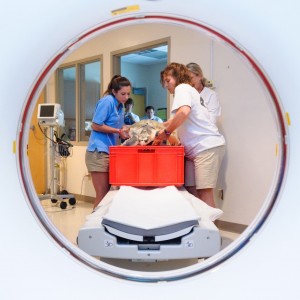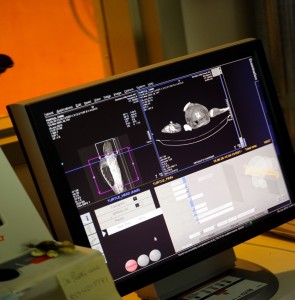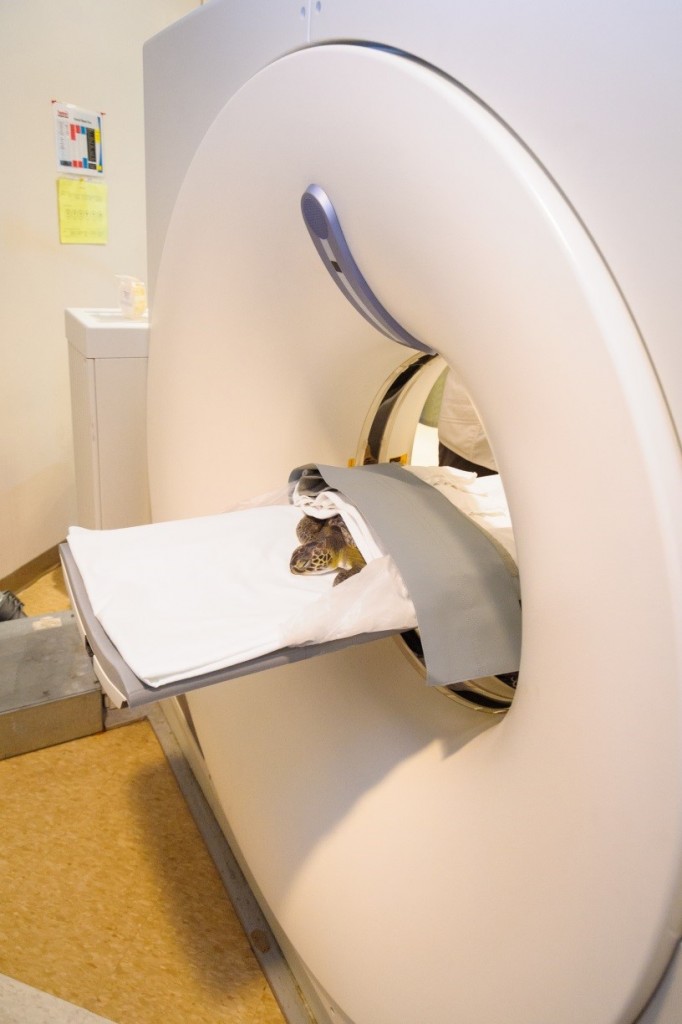Shared By RANDI CLARK, Communications and Marketing Advisor at Sentara Albemarle Medical Center (photos compliments of Shooters at the Beach)

First up: Fin, a Kemp's ridley found stranded on Hatteras Island in November 2014, got a scan for the second year to check on the healing of skull and flipper fractures (photo compliments of Shooters at the Beach).
Four sea turtles from the North Carolina Aquarium on Roanoke Island received CT scans at the Sentara Kitty Hawk campus on Friday. The scans help aquarium staff to get a better look into the extent of the how well the turtles are recovering from injuries.
“Our staff is always excited about taking care of the turtles and we look forward to these opportunities,” said Anna Lambert, diagnostic imaging manager of Sentara Kitty Hawk. “It is a privilege to be a part of their recovery and to know that it makes a difference.”
Augie, a green sea turtle found in July 2013 by the Beaufort, NC Coast Guard, is a possible candidate to be returned to the sea this year. Augie suffered fractures to two of his flippers, apparently from an interaction with a boat.
Early CT scans allowed a specialized splint to be created with a 3D printer by the North Carolina State University College of Engineering. Since both front flippers were injured, Augie has been at the Sea Turtle Assistance and Rehabilitation (STAR) Center for an extended period of time. Veterinarians have been monitoring Augie’s progress to be sure that the flipper bones are growing properly.

Local Scanning is Key: Long transports are difficult for the sea turtles so scanning locally is important (photo compliments of Shooters at the beach).
“We hope this CT scan is the last before this turtle is cleared for release!” said Christian Legner, North Carolina Aquarium on Roanoke Island Curator. If cleared, Augie will likely return to the wild in August.
The aquarium’s STAR Center, operated in partnership with the Network for Endangered Sea Turtles (NEST), rehabilitates sick and injured sea turtles. The goal of the program is to rehabilitate then reintroduce the turtles back into the sea. The Center currently houses 8 sea turtles.

Seafoam, a green sea turtle stranded in Corolla in June 2015, has what appear to be crushing injuries to the carapace and a fractured pelvis. This scan will help vets quickly choose the best way to treat this turtle (photo compliments of Shooters at the beach).
